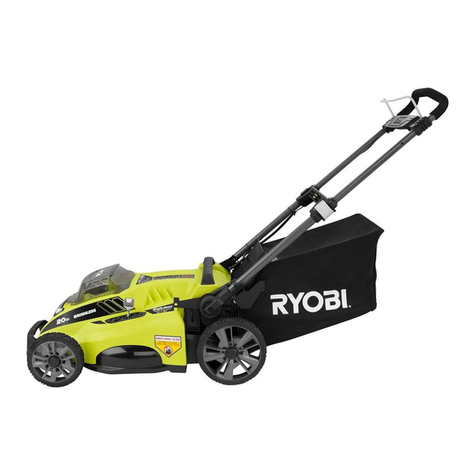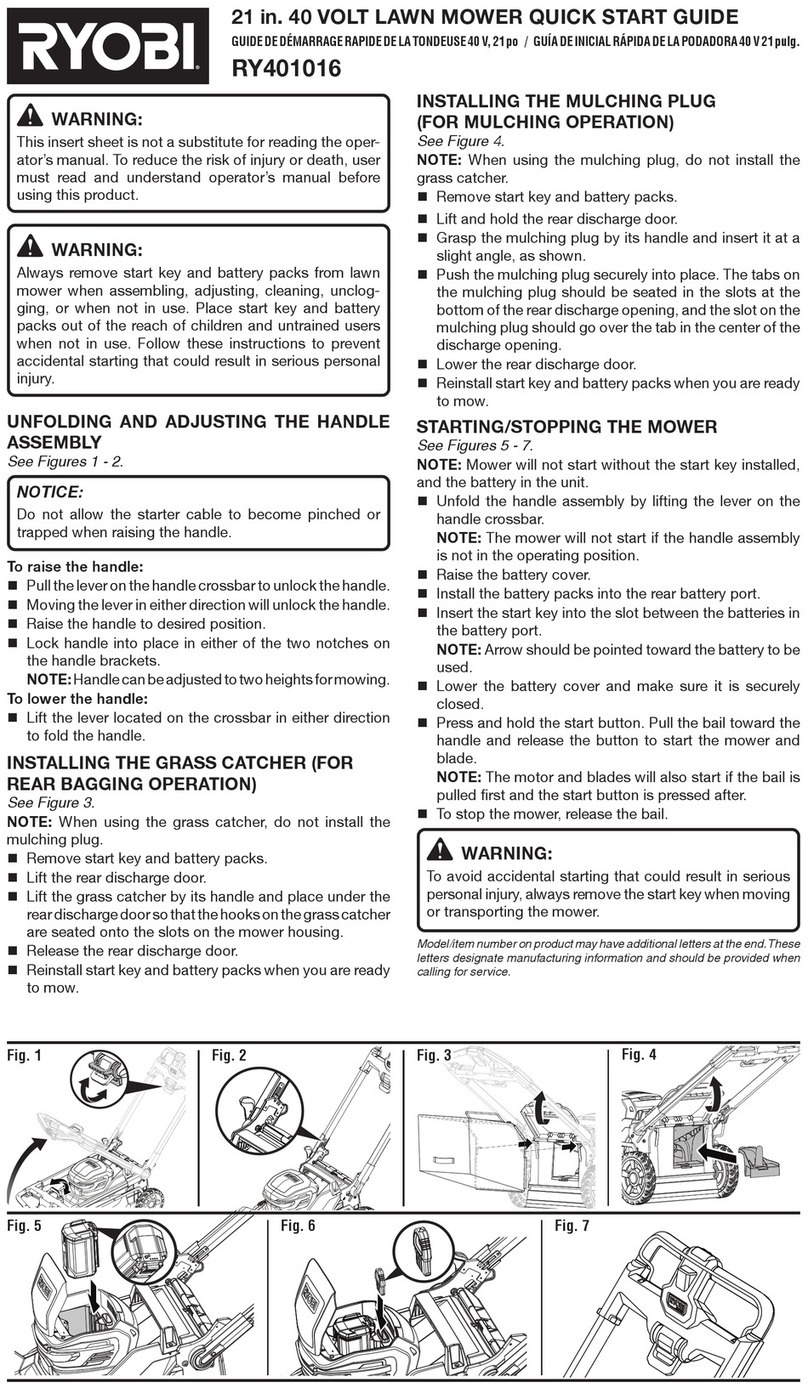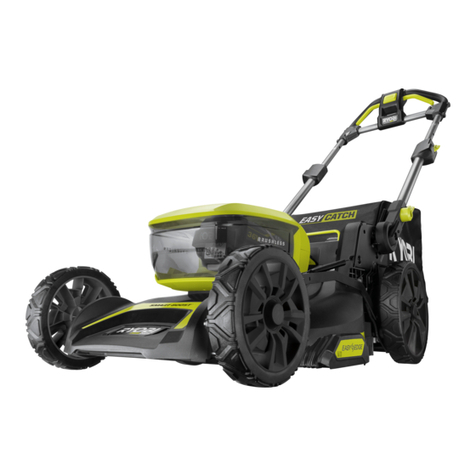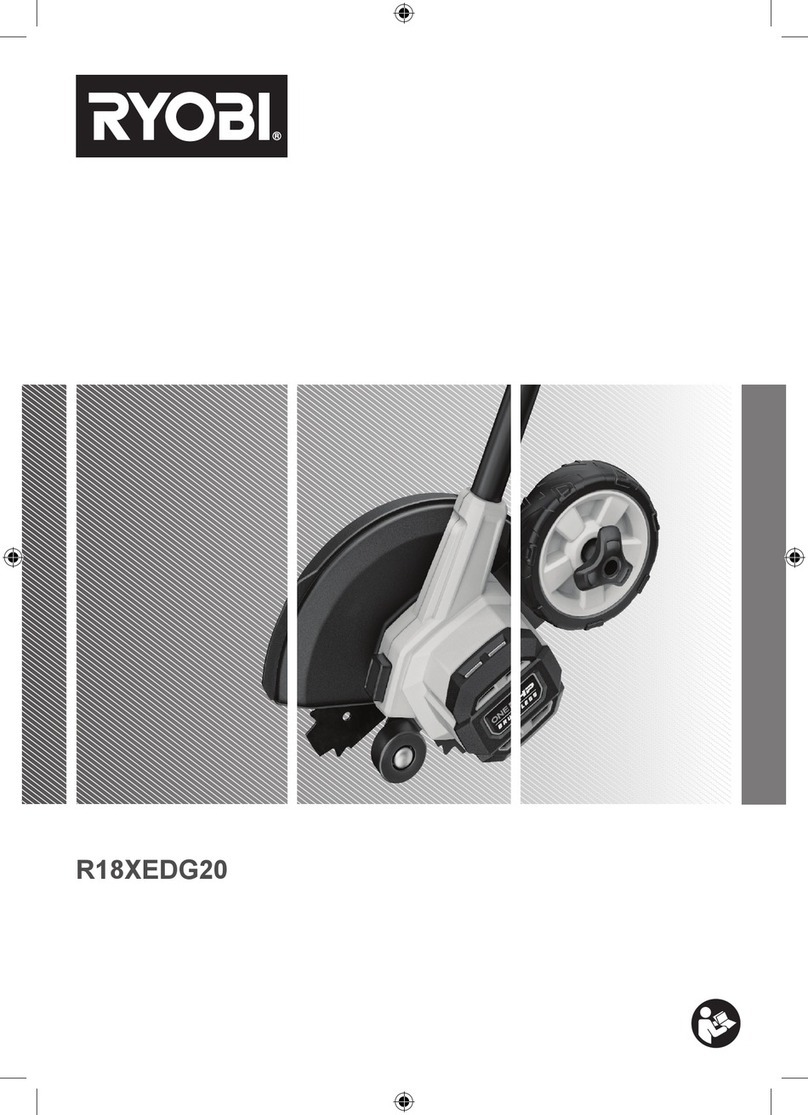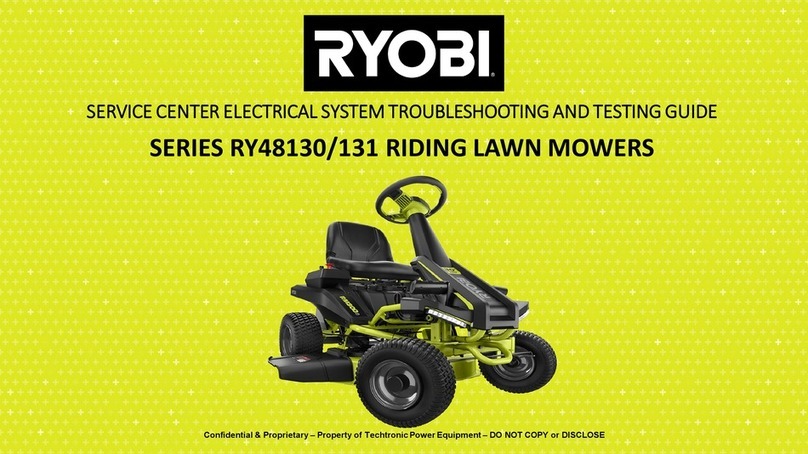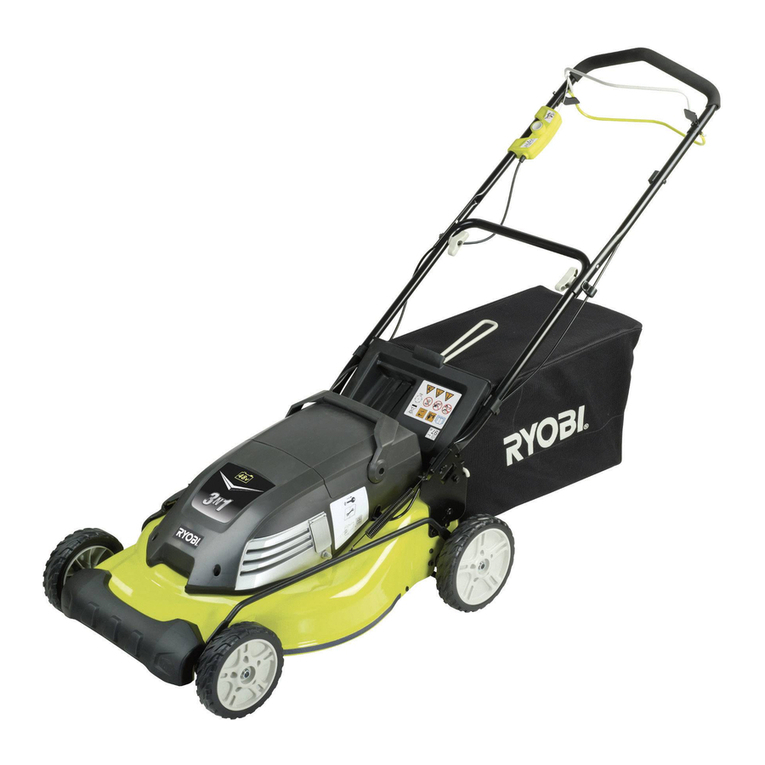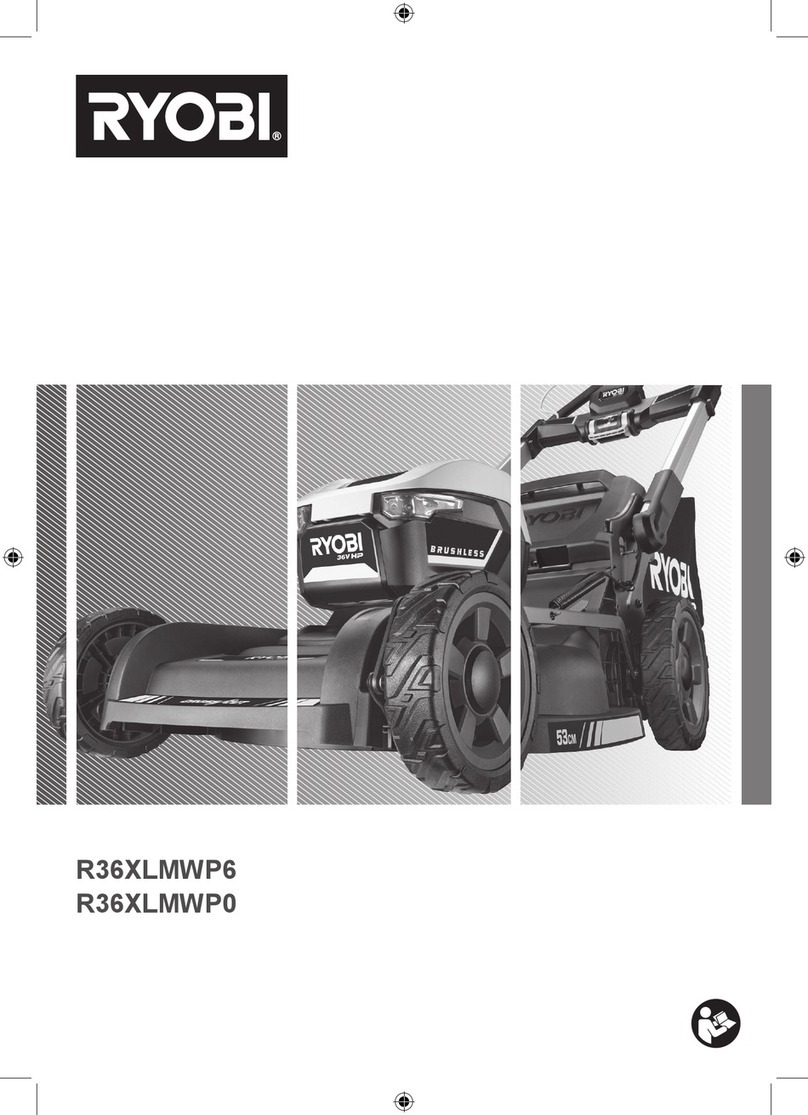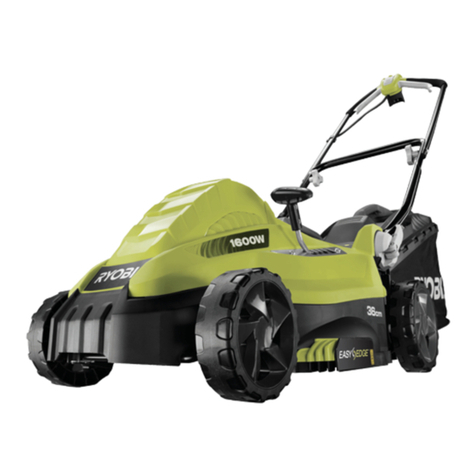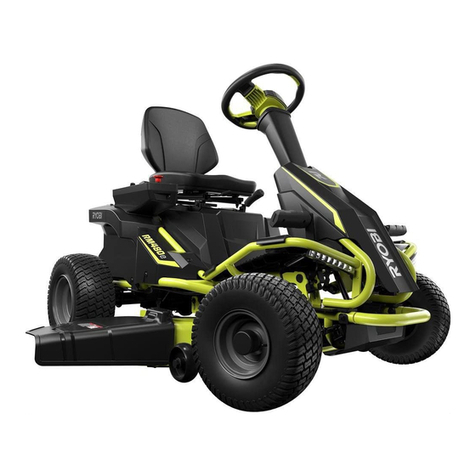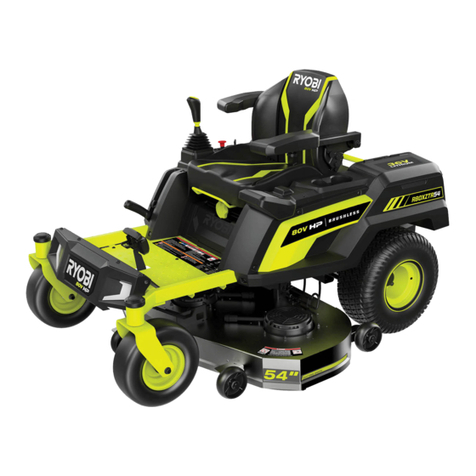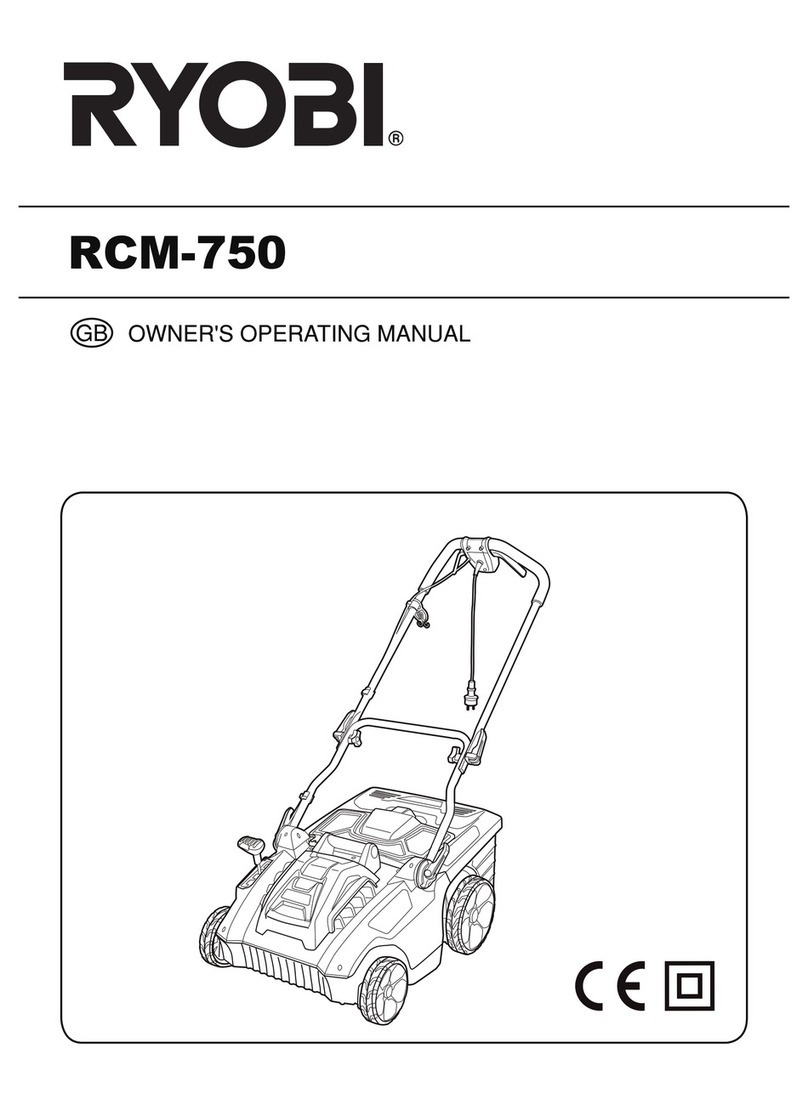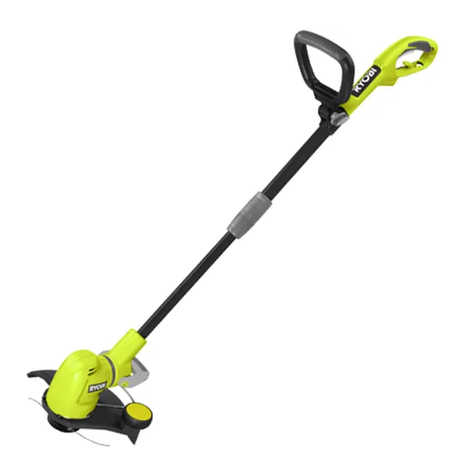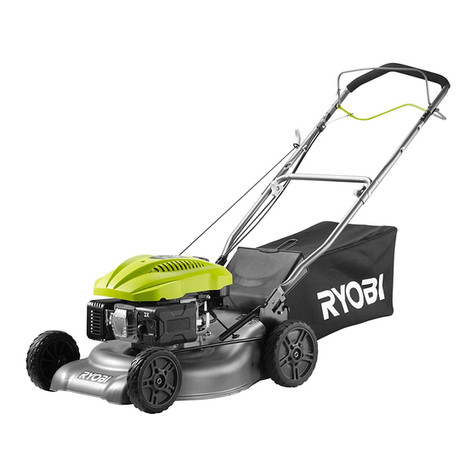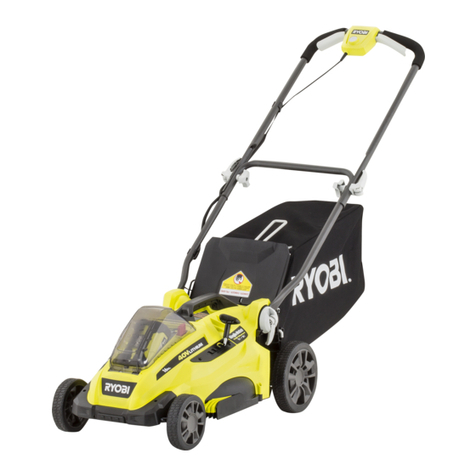
4
ADDITIONAL SAFETY WARNINGS
■The product must be started with the user behind the
handlebars in the operator safety zone. Never start the
product if:
●The grass discharge opening is exposed and is
not protected by the grass catcher or the grass
discharge cover.
●Hands and feet of all persons are not clear of the
cutting enclosure.
■Avoid holes, ruts, bumps, rocks, property stakes, or
other hidden objects. Uneven terrain could cause a slip-
and-fall accident.
■Turn off the product, remove the safety key and the
battery pack, and allow the blade to stop if the product
has to be tilted for transportation, when crossing
surfaces other than grass, and when transporting the
product to and from the work area.
■Do not tilt the product when turning on the motor or
while the motor is running. If absolutely necessary, raise
the front of the lawnmower by no more than 5 cm to
enable easy starting. Press down on the handlebar to
achieve this. Always return the lawnmower to its normal
position with all wheels on the ground before cutting.
Tilting the lawnmower exposes the blade and increases
the probability of objects being thrown and accidentally
making contact with the blade.
■Turn off the product, and remove the safety key and the
battery pack. Make sure that all moving parts have come
to a complete stop:
●whenever leaving the product unattended (including
disposal of grass clippings)
●before clearing blockages or unclogging the
discharge chute
●before checking, cleaning, or working on the product
●before removing the grass catcher or opening the
grass discharge chute cover
●after striking a foreign object; inspect the product
for damage and make repairs as necessary before
restarting and operating the product
●if the product starts to vibrate abnormally (check
immediately)
–inspect for damage, particularly the blades
–replace or repair any damaged parts
–check for and tighten any loose parts
■Always ensure that the motor control cable is never
trapped, pinched, or otherwise damaged during
assembly or when folding the handle. Never apply power
to the product if this cable is damaged. Have the product
serviced by an authorised service centre only.
■Injuries may be caused, or aggravated, by prolonged use
of the product. When using the product for prolonged
periods, ensure to take regular breaks.
■Operate the product only in temperatures between 0°C
and 40°C.
ADDITIONAL BATTERY SAFETY WARNINGS
■To reduce the risk of fire, personal injury, and product
damage due to a short circuit, never immerse the
product, battery pack, or charger in fluid or allow fluid
to flow inside them. Corrosive or conductive fluids, such
as seawater, certain industrial chemicals, and bleach
or bleach-containing products, etc., can cause a short
circuit.
■Charge the battery pack in a location where the ambient
temperature is between 10°C and 38°C.
■Store the battery pack in a location where the ambient
temperature is between 0°C and 20°C.
■Use the battery pack in a location where the ambient
temperature is between 0°C and 40°C.
PRODUCT FEATURES
OVERLOAD AND OVERHEAT PROTECTION
The product has an overload protection device. When
overloading is detected, the product automatically turns o.
If the overload protector is actuated, the on/o lever must
be released. Press the start button, and squeeze the on/o
lever to restart the product. If the product still does not start,
reinstall the battery pack.
The battery pack has overheat protection. Excessive
temperatures will cause the battery to stop powering the
product. If the battery pack is too warm, allow it to cool down
before resuming operation. If the product still does not work,
recharge the battery.
NOTE: The battery pack LED indicator will not work if the
battery protection feature has caused the battery pack to
stop powering the product. Turn o the product or remove
the battery pack from the product, and the battery pack LED
indicator will resume normal function.
GENERAL MOWING TIPS
The run time of the battery depends on the condition, length,
and density of the grass.
Adjust the cutting height of the lawnmower to suit the current
condition of the lawn.
■For best performance, always cut off one-third or less of
the total height of the grass.
■When cutting long grass, reduce walking speed to allow
for more effective cutting and a proper discharge of the
clippings.
■A higher cutting height extends the run time of the
battery pack.
TRANSPORTATION AND STORAGE
■Turn off the product, and remove the safety key and
the battery pack. Make sure that all moving parts have
come to a complete stop. Allow the product to cool down
before storing or transporting.
■Remove all foreign materials from the product. Store the
product in a cool, dry, and well-ventilated place that is
inaccessible to children. Keep the product away from
corrosive agents, such as garden chemicals and de-
icing salts. Do not store the product outdoors.
■Store the product in a location where the ambient
temperature is between 0°C and 40°C.
■Use extreme caution when lifting or tilting the product for
maintenance, cleaning, storage, or transportation. The
blade is sharp; keep all body parts away from the blade
while it is exposed.
■For transportation in vehicles, remove the safety key
and the battery pack, and secure the product against


